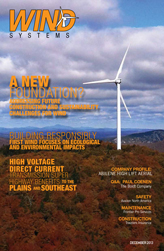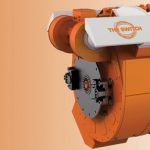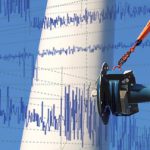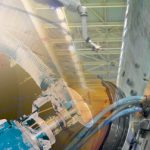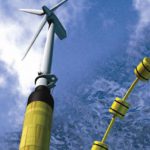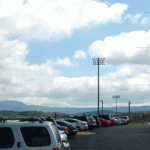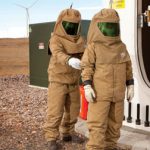For much of the United States, the wind season is on!
Everyone is ready for the wind to blow. It makes sense to take some time to review the dangers of your wind farm. Of all the potential dangers in our industry there are few that make me do a double-take before I begin to work on a turbine.
One such danger is the potential for electrical arc flash and arc blast. Turbines today have the potential for the release of huge amounts of energy in an accidental arc flash or arc blast. You can bet that someone somewhere has put themselves and their partner at risk by rushing past the smart and prudent use of protective procedures and safety gear—procedures as simple as shutting off the power or using a face shield and gloves.
Many of today’s technicians started on a wind farm with new wind machinery. As this machinery ages, the likelihood for failures in the electrical system grows. Electrical connections loosen from thermal cycling and/or vibrations; contactors wear; relay coils fail; and sensors stop sensing. All of these problems require the technician to spend more time poking and prodding in the electrical panels. They search for the problems and troubleshoot for a solution. Some problems are very evident due to the burnt look and smell. Others are complete mysteries until found with test equipment.
Who are these people that are performing these troubleshooting events for you? In the past, I ran a wind farm of 120 or so turbines with two technicians. We didn’t have a large support staff and there was no OEM support. For this wind farm I would always hire people that had a minimum of a two-year degree in electronics or electrical systems. I did this to provide reassurance in the event of an electrical accident. I figured if something bad happened with the electrical system with these techs—even if it was due to me failing to train them on something specific—that I would know that these technicians had spent two years of their time studying electrical systems and that they should know better. This made me feel that it wouldn’t be all my fault if they made a mistake with an electrical system.
There were times when accidents did happen—even with all that training. That was years ago and the turbines back then didn’t have as much potential energy available for arc flash or arc blast dangers as the wind turbine systems do today.
I am not saying that your technicians need a two-year degree in electrical systems. I’m asking that you consider what you are doing to ensure that techs understand the electrical dangers so they all go home safe.
How do you train your people to troubleshoot these electrical systems safely? How do you ensure that they always wear the “complete” arc flash protection gear? In my experience, the number one item that technicians don’t use while donning their arc protection gear are the ear plugs. I imagine it is probably the same within your group. The technicians wear their arc flash clothing, put on the gloves, their face shield, but fail to insert ear plugs. They are focused on the visual of the arc flash and don’t think about the energy in the arc blast. You know that you might survive the arc flash but not the arc blast.
Some turbine controller cabinets today have the proper markings indicating the level of protection you should wear if you open a panel. Even so, there is no lock that prevents you from doing so. Just a quick look in a panel at the wrong time is all it takes to ruin someone’s life. Safety managers should take time to review and to ensure that technicians take to heart that the safety meeting and the safety rules are not just for good insurance rates.
Wearing all your protective gear may help save them lots of pain, and their loved ones too. If you are a technician reading this and you do not have an electrical background or training, I recommend that you go get some. You may be able to wing it and learn on the job but taking time to understand what you are working with will make your job all that much safer for you and your coworkers.
There are many electrical systems on a turbine. You may troubleshoot a control system of low voltage A/C and then have to start checking the AC power system. Next, you may be in the DC power system. Most of us are experienced with low voltage DC used in low voltage, low current systems. On some wind turbines there are DC systems that can supply or operate at greater than 100v DC and can supply a substantial amount of current. Having a close encounter with direct current is a bit different than an A/C system. The direct current doesn’t let you let go and locks you on.
Have a good start to the wind season, be safe, and prevent surprises.



















